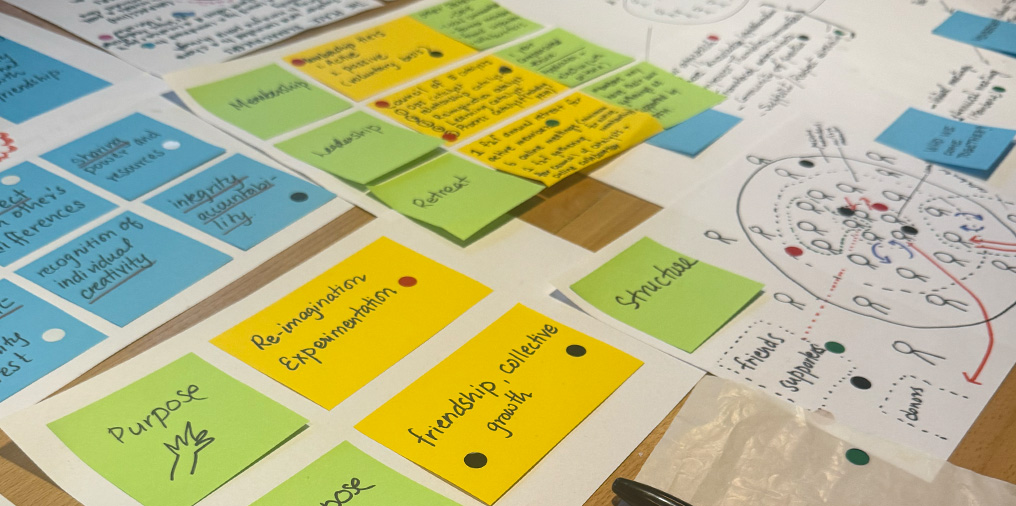I am writing as an Imagination Catalyst. I'm sharing how it felt to support a translocal community, to prototype collective power and inclusive leadership, in their journey of collective organizing. This short digestion of my embodied reflections within Reimagine Peace, was comissioned and first published in the Transformational Governance Universe.



Reimagine Peace has been a beautiful learning environment for transformational governance. It is a unique space co-created in apparent contradiction: it functions within the system but exists to reimagine it. At the heart of this process, collective governance is imagined and emerges.
If a catalyst can be an agent that speeds up a reaction by reducing energy, my role was an oxymoron. As an Imagination Catalyst I strived to facilitate collective creativity by slowing down and acknowledging this process requires a lot of energy along the way. Following the metaphor, if catalysts in reality exist as gases, liquids or solids, for the substance of imagination, they take the shape of tensions. A tension is the space between what is and what can be. Tensions are the space for stretching, the potential for change, the struggle to transition from imagination to future. They show up when you feel there is a shift that needs to happen.
I understand a tension as a “gap between the current reality and the potential you sense”. * I've integrated the practice of embodying tensions. I recognise them when I'm triggered by the dissonance between how I perceive a situation and what I would prefer to see.* Therefore, tensions are personal and they come from sensing the environment and feeling yourself. They are a call for self reflection. Tensions are the substance that prompts imagination.
As an imagination catalyst I sensed several tensions sitting at the intersection of the present we know and the future we'd prefer. I invite you to connect with one of the most meaningful ones for me.
Catalysing imagination for plurality feels like inhabiting parallel realities. It's holding space both for the excitement of exploring new horizons and the resistance to trying something different. When we romanticise creativity, we struggle to lean into the discomfort of the process.
I perceived the romanticisation of creativity in moments when:
At the same time, I believe there was resistance to change in the room because putting creativity into action is difficult, it asks us:
If governance is the process of figuring out how to work together, and the practice of collective imagination is a process for learning through navigating tensions as a community, transforming governance is practicing collective imagination.
These reflections are a gesture of reciprocity to the Reimagine Peace Community. I’m grateful for walking alongside them in this journey. Please take them as a prompt to create alternative ways for being together and doing together.